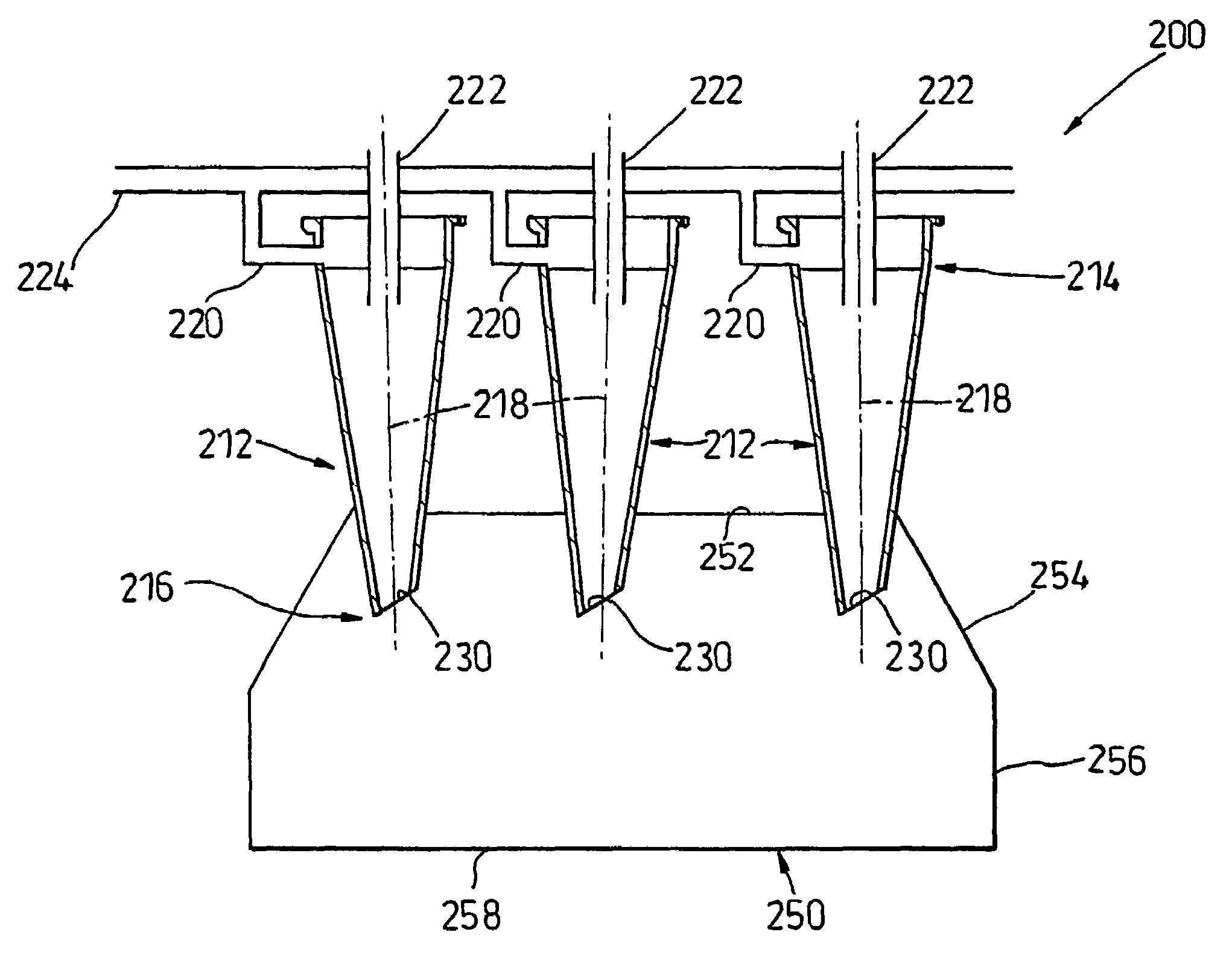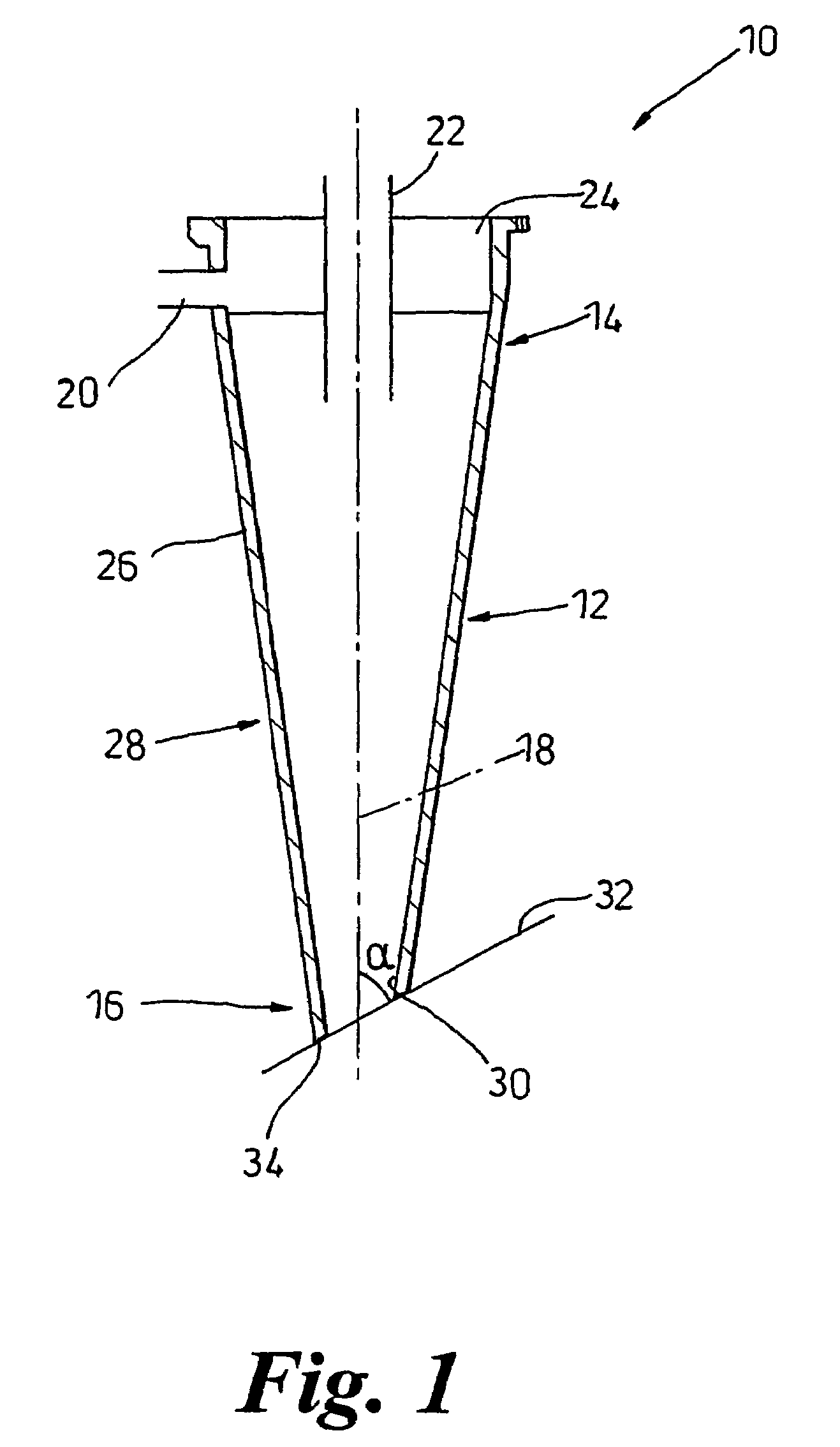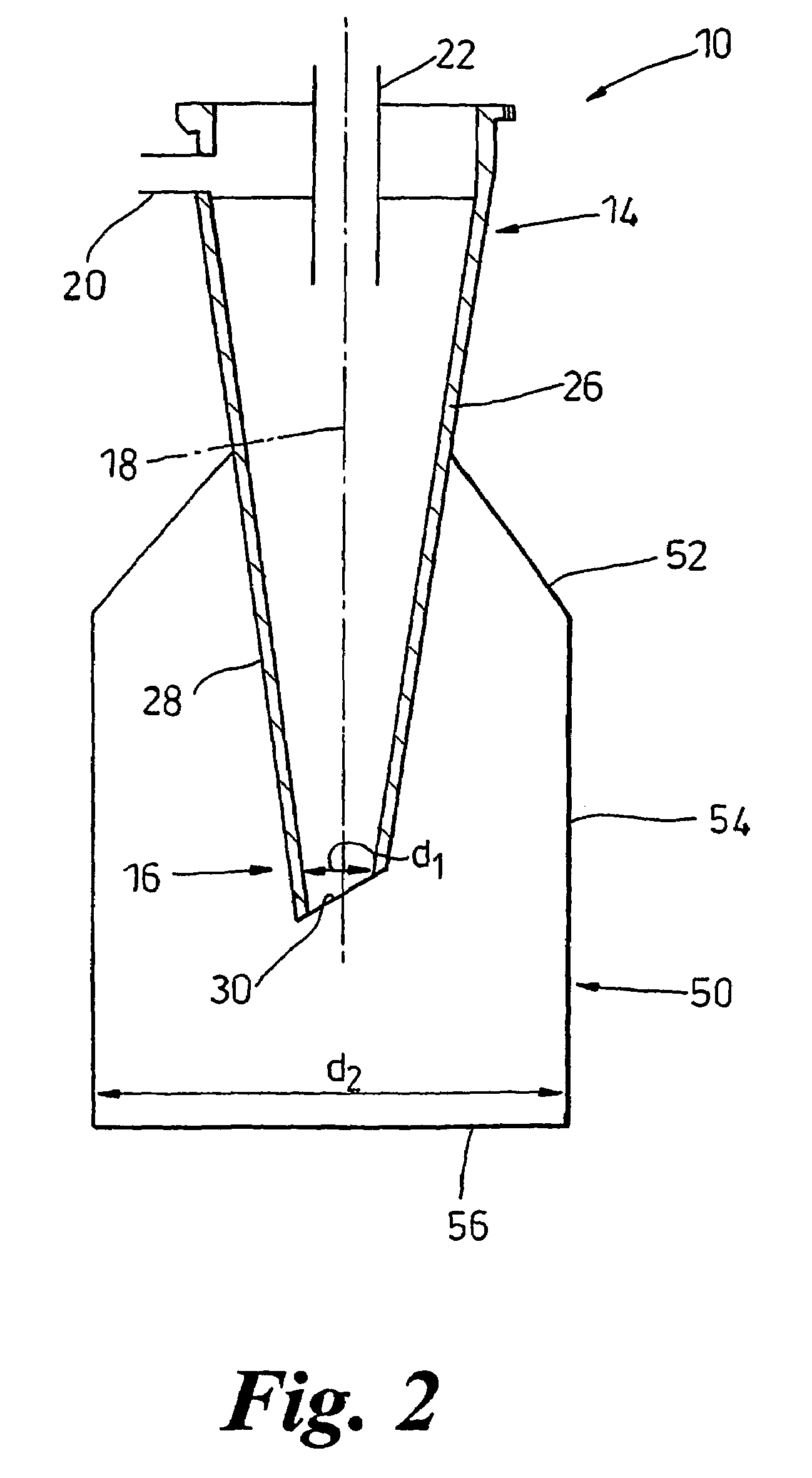Cyclonic separating apparatus
a cyclonic separation and separating device technology, applied in the direction of liquid separation agent, filter regeneration, dispersed particle filtration, etc., can solve the problems of reduced flow, reduced separation efficiency, and increased so as to prevent blockage, reduce the risk of cyclone blockage, and optimise separation performance
- Summary
- Abstract
- Description
- Claims
- Application Information
AI Technical Summary
Benefits of technology
Problems solved by technology
Method used
Image
Examples
first embodiment
[0018]FIG. 1 shows cyclonic separating apparatus 10 according to the invention. The cyclonic separating apparatus 10 comprises a cyclone 12 having a first end 14, a second end 16 and a longitudinal axis 18. The first end 14 is generally cylindrical and has an inlet 20 for introducing dust laden fluid, preferably air, into the cyclone 12. The inlet 20 is circular in cross-section and communicates tangentially with the first end 14. An outlet 22 is also provided at the first end 14 to direct cleaned air out of the cyclone 12. The outlet 22 lies on the longitudinal axis 18 and extends from the interior of the cyclone 12 and through an upper portion 24 of the first end 14.
[0019]A side wall 26 tapers inwardly towards the longitudinal axis 18 from the first end 14 towards the second end 16 to form a frusto-conical portion 28. A cone opening 30 is formed at a free end of the frusto-conical portion 28. The cone opening 30 lies in a plane 32 inclined at an angle α to the longitudinal axis 18...
second embodiment
[0020]In a second embodiment, shown in FIG. 2, the cone opening 30 projects into a collector 50. The cyclonic separating apparatus 10 is otherwise the same as that shown in FIG. 1. The collector 50 comprises a frusto-conical upper portion 52 and a cylindrical body portion 54 which is closed by a circular base 56. The upper portion 52 abuts against the side wall 26 of the cyclone 12. The diameter d2 of the circular base 56 is at least three times the projected diameter d1 of the cone opening 30. The diameter d2 shown in FIG. 2 is approximately six times the diameter d1. To minimise any possibility of particle re-entrainment, the cone opening 30 is spaced from the body portion 54 and from the circular base 56.
[0021]In use, a dust-laden fluid flow enters the separating apparatus 10 via the inlet 20. The fluid flow is caused to follow a helical path around the interior of the cyclone 12 from the first end 14 downwardly towards the second end 16 and through the cone opening 30. The frust...
fourth embodiment
[0023]the invention is shown in FIG. 4. The separating apparatus 200 comprises an arrangement of parallel cyclones 212 each having the same configuration as the cyclone 12 of FIG. 1. It will be appreciated that the cyclones 212 could alternatively have the configuration of the cyclone 112 shown in FIG. 3. The cyclones 212 are arranged so as to lie alongside one another, each having a tangential inlet 220 and an outlet 222. A main inlet 224 feeds dust laden fluid flow into the separating apparatus 200 and a proportion of the fluid flow is directed into each inlet 220. Each cyclone 212 has a cone opening 230 which projects into a common collector 250 having an upper portion 252, tapering side walls 254, a cylindrical body 256 and a base portion 258. The cone opening 230 of each cyclone 212 lies in a plane which is inclined to the longitudinal axis 218 of the respective cyclone 212.
[0024]A specific arrangement of parallel cyclones is shown in FIGS. 5 and 6. Twelve cyclones project into...
PUM
| Property | Measurement | Unit |
|---|---|---|
| angle | aaaaa | aaaaa |
| angle | aaaaa | aaaaa |
| angle | aaaaa | aaaaa |
Abstract
Description
Claims
Application Information
 Login to View More
Login to View More - R&D
- Intellectual Property
- Life Sciences
- Materials
- Tech Scout
- Unparalleled Data Quality
- Higher Quality Content
- 60% Fewer Hallucinations
Browse by: Latest US Patents, China's latest patents, Technical Efficacy Thesaurus, Application Domain, Technology Topic, Popular Technical Reports.
© 2025 PatSnap. All rights reserved.Legal|Privacy policy|Modern Slavery Act Transparency Statement|Sitemap|About US| Contact US: help@patsnap.com



